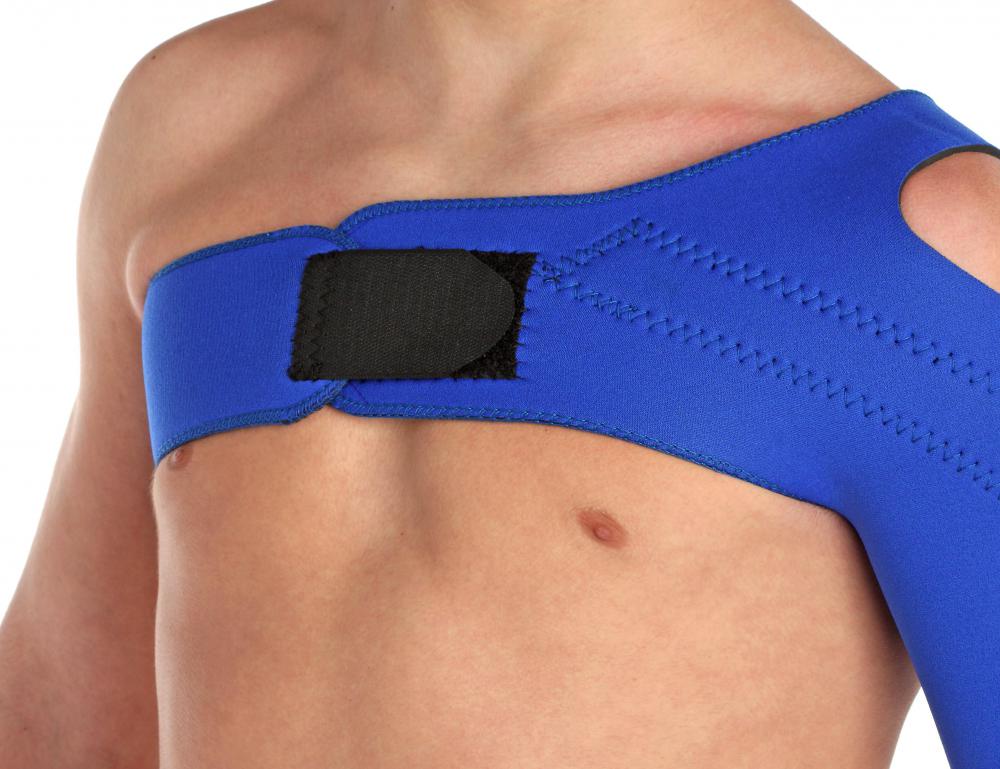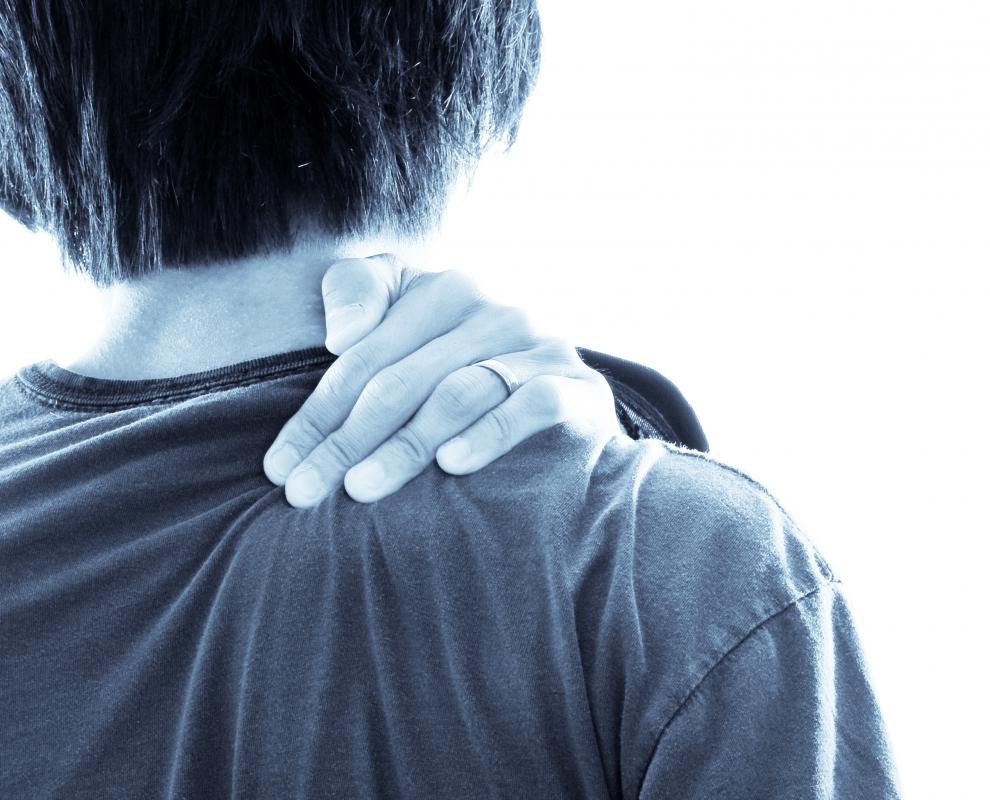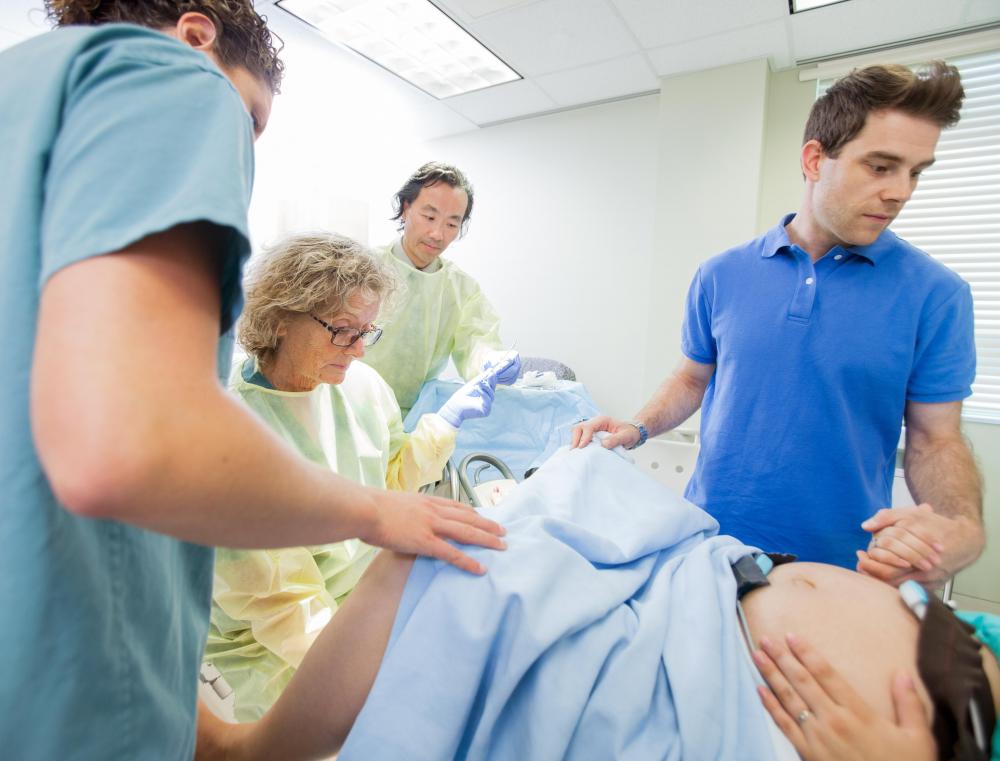At TheHealthBoard, we're committed to delivering accurate, trustworthy information. Our expert-authored content is rigorously fact-checked and sourced from credible authorities. Discover how we uphold the highest standards in providing you with reliable knowledge.
What Is Clavicle Plating?
Broken clavicles are broken collarbones, the diagonal bones in the upper chest and beneath the neck that extend to the shoulder on each side. Used as a strut to support shoulders and connected to the breastplate, the clavicle holds shoulders in alignment to chest areas. Standard methods for diagnosing a broken clavicle are X-rays, in adults. For children, emergency rooms often use ultrasound imaging as the diagnostic tool. When a person falls with outstretched hand or onto the very point of their shoulder, broken clavicles are common and the repair often consists of clavicle plating.
Clavicles are the most common broken bones to appear with collarbone pain in emergency rooms. Broken clavicles are so common that newborns can be born with them during difficult deliveries. Bone fragments may override causing considerable neck pain and collarbone pain.

Some types of clavicle plates are affixed in the front of the break and others are attached beneath or behind the break to support the shoulders and correct shoulder droop while the clavicle is healing. It has been found that placing the clavicle plating behind or beneath the break can lead to less stiffness and rigidity when bending. This method also generally lowers the risk of nerve damage and physically is less prominent in appearance. Many of the plating types are noncontoured or precontoured for particular areas of break and some use locking screws to attach, whereas others have nonlocking screws. Clavicle plating is generally preferred over pins alone, as the residual disability level for pins that fail is often too high.

In surgeries, attachment of clavicle plating can be difficult as the bone is actually S-shaped and has a precise bowing configuration from where it is attached at breastplate and shoulder. Maintenance of this bow requires use of a digitizer and modeling software use as well as axial X-rays from every angle. Studies demonstrate that precontoured clavicle plates achieve a better fit in men than in women, though the bow is nearly identical in both sexes. These studies also find that the use of clavicle plating achieves better function after recuperation than any other treatment method.

Outcomes may depend upon the degree of break, and surgery is the only option in those fractures where the bone has come through the skin. These typically take longer to heal as there is both bone and wound to rehabilitate. In those clavicles that have been treated by other methods and the bones refused to knit together, surgery and placement of clavicle plating may be the only remedy for the pain and loss of function.
AS FEATURED ON:
AS FEATURED ON:

















Discuss this Article
Post your comments